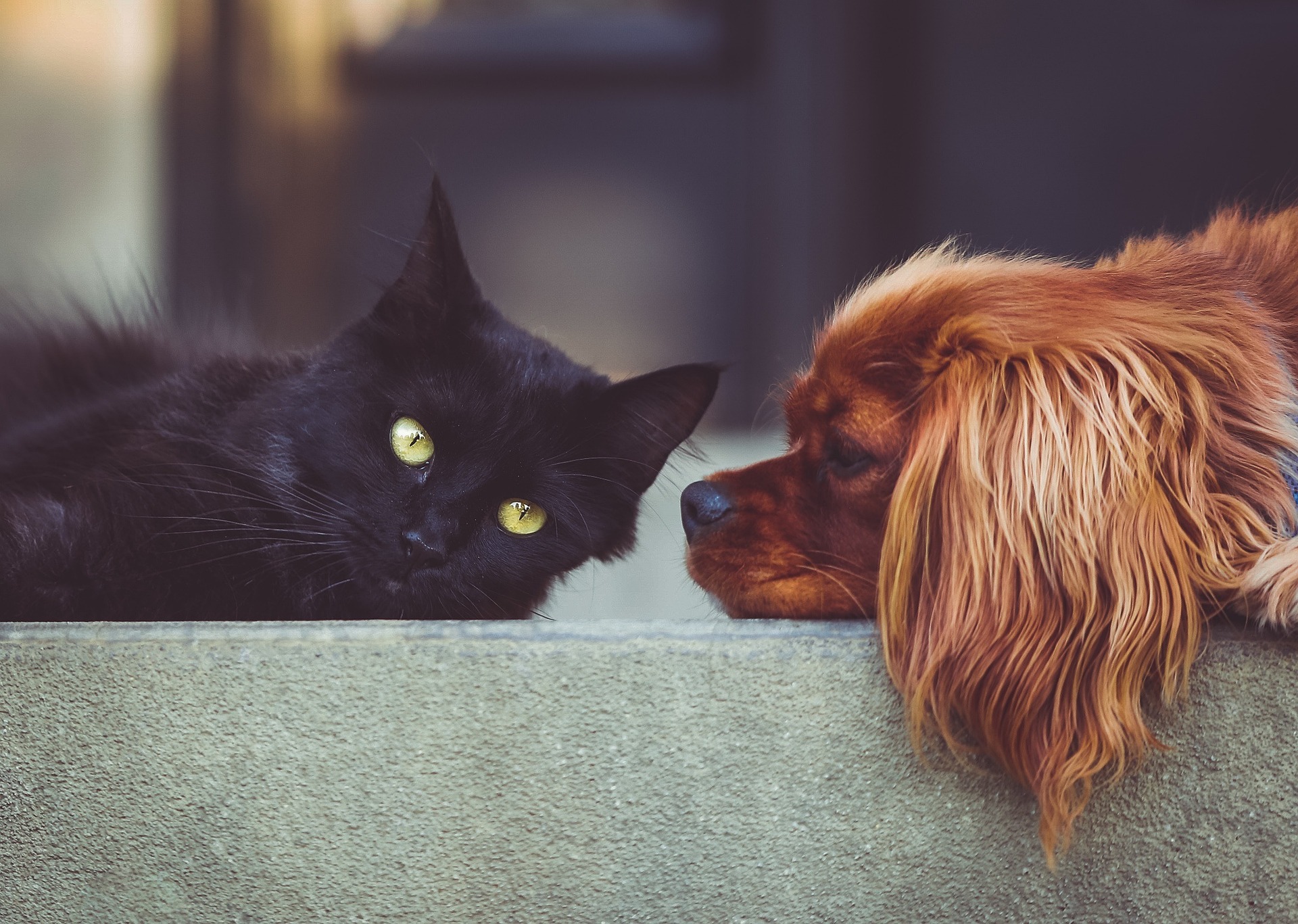Some people have very strong opinions on cats and dogs; ‘cat people’ and ‘dog people’ might think that dogs and cats living and thriving in the same household is impossible. Despite their differences, there is no inherent reason why cats and dogs can not share space in a safe and cooperative manner. If you are considering introducing a new cat to your household, read this blog to learn our tips that help simplify the process and discover the pitfalls that are best to avoid.
Old Dog and New Cat Introductions
Introducing a new pet to the household can be a difficult process, even if they are a part of the same species. Many of the tips that apply to introducing two new dogs to one another also apply when introducing a dog to a new cat.
Lower Expectations – Pet owners can potentially put their animals into dangerous situations when they have lofty expectations for the future. When you adopt a pet, you accept the fact that they are their own individual being that might not always go along with their owner’s plans and goals. That being said, your dog and cat have the potential not to be best pals, and that is okay. Owners should always strive to minimize potential harm and strife between their pets, but you should never force interactions that can stress out your pets and leave them feeling unsafe in their own house.
Initial Meeting – Bringing home a new cat and dropping it in front of your dog is not the recommended way to introduce your pets to each other. Before any pet introductions, you should allow the newest member of your family to establish themself in a safe area of the home and gain their bearings. The anxiety of being transported to a new, unknown place with strangers is already stressful enough without introducing another variable of a large dog to the equation. Once your new pet feels comfortable, you can provide items to each animal that carry the scent of the other and eventually work your way up to a face-to-face meeting. During this supervised initial first contact, provide escape paths for either animal to take so they do not feel trapped in the situation. You can also have their initial meeting take place with a fence, gate, or transparent barrier between them. They can safely gauge each other without the threat of a larger or more rambunctious dog harming the generally smaller cat.
Continued Observation – If either animal seems outwardly hostile and unable to coexist with the other, you may need to consider a training program to teach them to keep the peace. In most situations, however, cats and dogs can live in the same house, even if they don’t become best friends. Keep a close eye on their body language and behavior during future interactions to ensure neither animal is overly stressed. Important aspects of their life, like their food, water, litterbox, and bedding, should be in separate areas of the house so that interactions only occur when both animals choose to be together. This also allows your cat and dog a safe place to retreat to if they ever become upset or overwhelmed by the situation.
Training your dog to act in a safe and respectful way towards a new cat and any other animals in your house is the best way to ensure your household is happy and full of fun. If your situation requires professional help, call the expert dog trainers at Gulf Coast K9 Dog Training of Bradenton.





